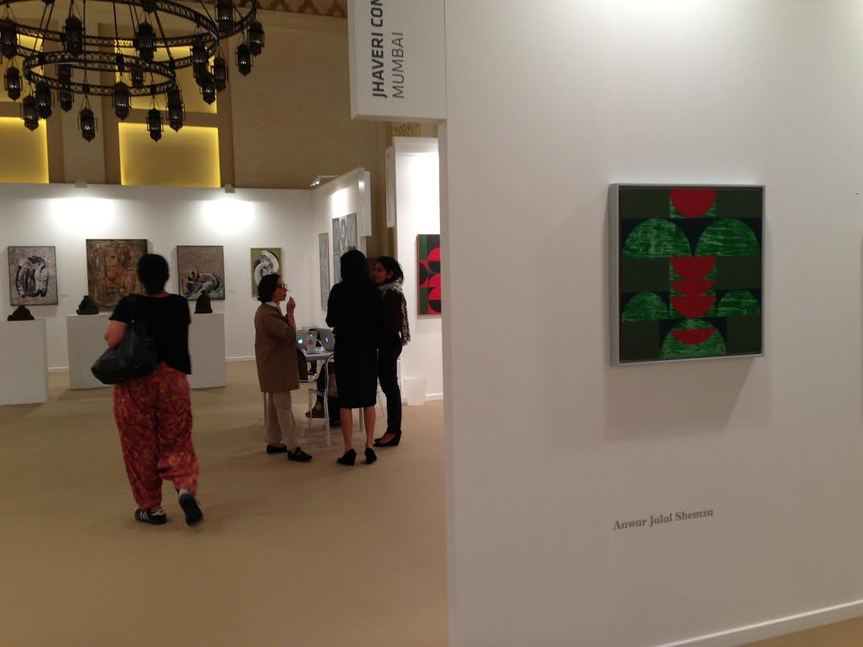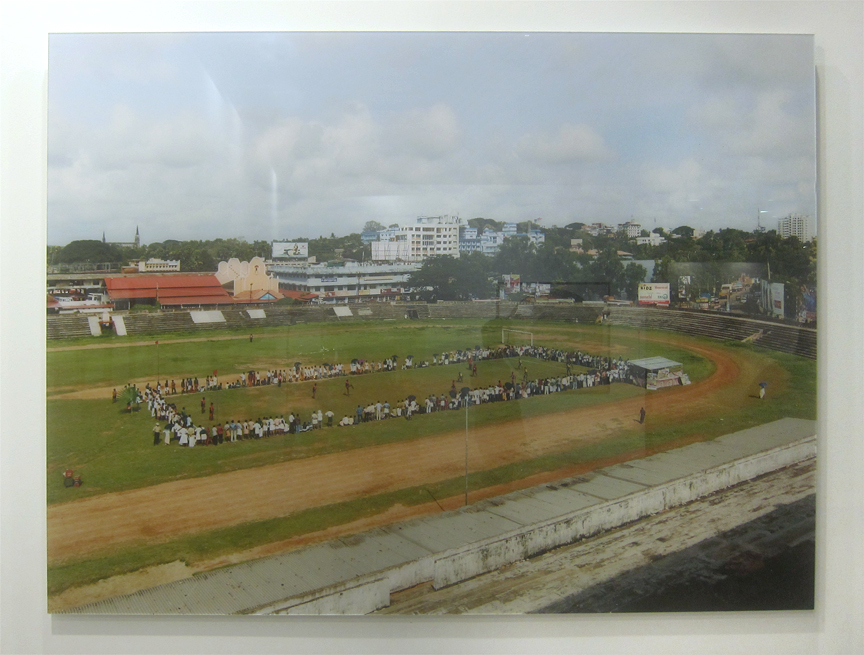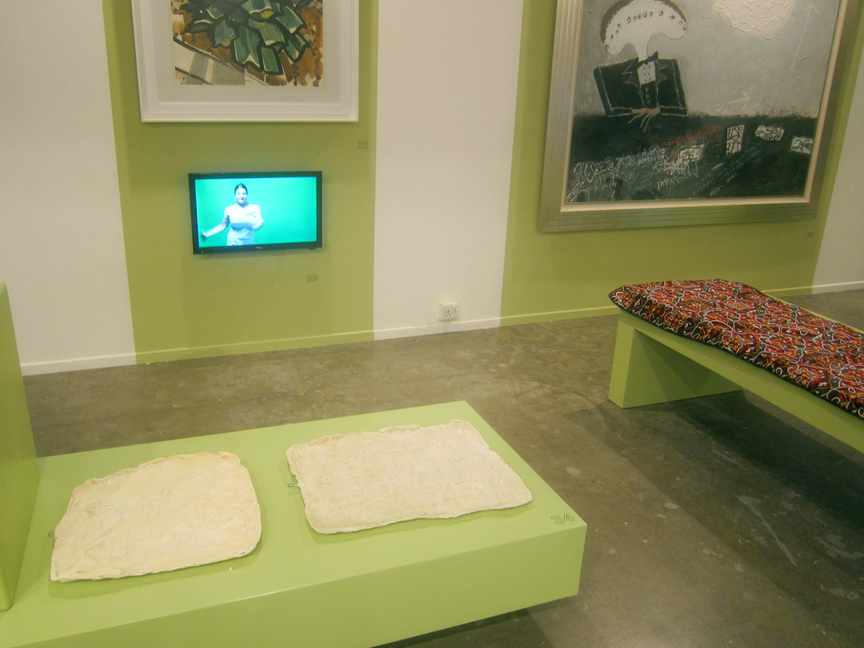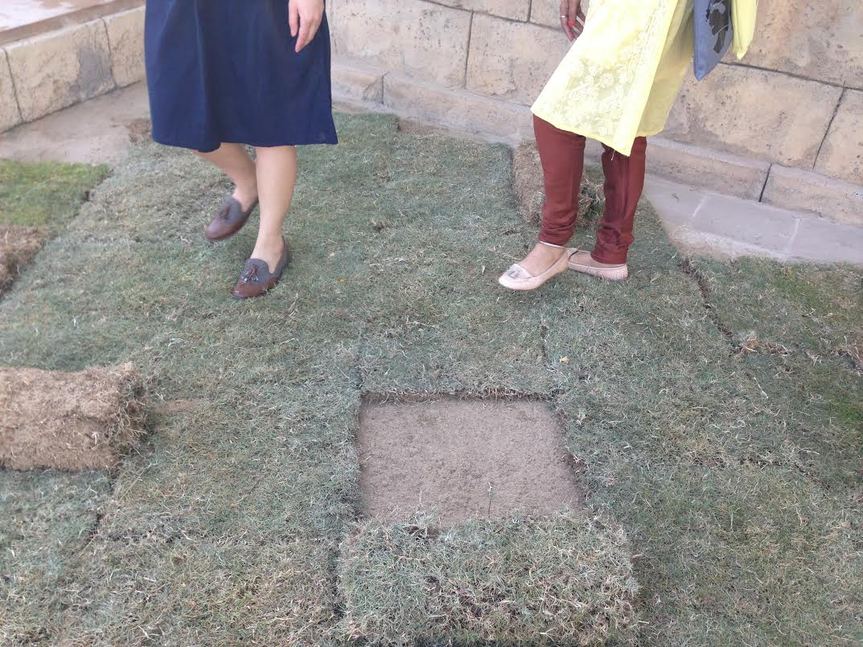
R
E
V N
E
X
T
Backward Glances at Art Dubai
At this year’s Art Dubai, journalists, collectors and art enthusiasts were invited to press their lips against history and breathe life into it, continuing the fair’s mandate to give back to the region. At times this relationship could seem slightly tenuous. “When we resuscitate someone it’s somewhat disrespectful,” said Payam Sharifi a member of Slavs and Tatars, the artist collective who curated the Marker Section, which this year was devoted to works from Central Asia and the Caucasus. “They didn’t ask you to put your lips on theirs,” he cautioned, citing the often perverse relationship between history, art and commerce.
It is true that forays into the past of this post-oil city may not have been the foremost agenda. Situated on the luxurious premises of the Madinat Jumeirah, a five-star resort that overlooks the Persian Gulf, during the opening days one was more likely to hear a rattling off of prices than ruminations on the young emirate’s proverbial backbone. Still, with a new section devoted to Modern art from South Asia and the Middle East, and a slew of collateral events, which included the annual Global Art Forum and a comprehensive Education section, the fair’s organizers, with the formidable Antonia Carver at the helm, made an earnest attempt to consider Dubai’s impressive crescendo. Recently announced as the host of the upcoming Expo 2020, exploring the precedents to what is becoming a rich cultural hub seemed timely. Here’s a look at some of the fair’s highlights.
All photos by Ming Lin for ArtAsiaPacific.
A balloon signaling the location of Art Dubai’s new Modern section hovers over the Madinat Jumeirah, a five-star resort modeled after a traditional Arabian town.
In the exhibition halls, 85 galleries hailing from 34 countries represented over 500 artists. Divided into the Modern, Contemporary and Marker sections, the first of the three, presented in the halls of Mina A’ Salam, offered solo and two-person shows of the region’s most eminent artists working in the 20th century.
Galleries exhibited a convincing mix of local and international artists at varying stages of their careers in the Contemporary section. Returning galleries included Experimenter from Kolkata and Grey Noise, Dubai, while Galleryske from Delhi and Bangalore and Singapore’s Yavuz Fine Art made their debuts.
Over at the Marker Section, Slavs and Tatars acknowledged the supportive infrastructure and investment offered to Middle Eastern artists by exhibiting in contrast five institutions from Central Asia and the Caucasus who exemplify alternative models of art education and production, including the nonprofit Yarat in Baku and Asia Art + in Almaty.
Outside, visitors could happen across 12 commissioned “Projects” that melded gracefully with the picturesque setting. Local weeds set up at the building’s foyer by Beirut-born, New York-based artist Youmna Chlala invited visitors to tread through them, creating a poetic rite of passage.
At the Global Art Forum, this year titled “Meanwhile . . . History,” the history of Dubai, as well as the notion of history itself were discussed. Visitors learned of the demise of the region’s pearling industry, once a major source of revenue, and were also invited to contemplate the micro-narratives of their own Facebook timelines.
Media Culture scholar Butheina Kazim and historian and researcher Frauke Heard-Bey in conversation during “Crisis: The End of Pearling in the Gulf,” one of this year’s Global Art Forum topics.
Art Dubai took place March 19–22, 2014.
Ming Lin is assistant editor at ArtAsiaPacific.








